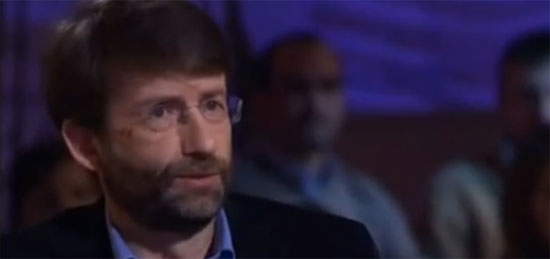On Dario Franceschini's idea of recontextualizing works of art.
As is often the case, when it comes to tourism, ideas are likely to be few and far between, but quite confusing. Today, in the Corriere della Sera, a nice interview with Minister Dario Franceschini came out, who gave us his recipe for moving tourists to smaller towns: return works of art to the places where they were produced. And to conduct this “relocation of art pieces to their places of origin,” in his words, Franceschini also invents a new word: "re-contextualization.“ An idea that, net of all the problems it would entail, would not be so peregrine in certain cases (indeed, it would be beyond interesting) and would make it possible to reconstitute collections or bring works back to the places for which they were intended, assuming it is implemented in a serious way. Too bad, however, that Franceschini has a very peculiar idea of ”re-contextualization": in the interview he cites a few examples and, limiting us only to those involving art of the sixteenth-seventeenth century, in none of the cases would the work, according to the minister’s ideas, actually be returned to the place for which it was originally intended.

Take for example the work by Lorenzo Sabatini, cited by Franceschini with a gross inaccuracy because, in the Madonna with St. Peter handing the keys to St. Clement, the saint is actually not Peter but Petronius (and being the patron saint of Bologna, this is no small inaccuracy... ). Here, Franceschini rightly says that the work comes from the College of Spain in Bologna, and he would like it returned...to the Pinacoteca Nazionale! But how, aren’t works supposed to return to their places of origin? Then why should the work, instead of returning to the College of Spain, be placed in the Pinacoteca Nazionale? It would be a mere move: so it might as well stay where it is, right? Same for Federico Barocci’sEcce Homo, brought to Brera following the Napoleonic spoliations: the place of origin is well documented and still exists, and it is the Oratory of the Holy Cross in Urbino. And Franceschini would like to see the work returned-to the Galleria Nazionale delle Marche. More moving. Not to mention Tintoretto’s Leda and the Swan, currently at the Uffizi... here we do not know for whom this painting was made, since its known history begins with Cardinal Mazarin (we are therefore in the 17th century), and at the Uffizi it arrived after several changes of ownership: to bring it to Venice, as Franceschini suggests, would therefore not only be anti-historical, but would also make little sense since we do not know for whom the work was made.
Without taking into account the fact that all this, if we think of the reasons given by Franceschini for moving the works, would go against common sense, which wonders for what absurd reason droves of tourists should flock to Bologna if the Pinacoteca di Brera were to return to the city of Bologna a half-unknown work by Lorenzo Sabatini, a Mannerist painter worthy of note but certainly not capable, at least for now, of moving masses of tourists, as the minister hopes. And certainly, major museums would not deprive themselves of works that have a strong appeal to the general public (not least because for most of them, moving them would not make sense since, in order to recompose one storyline, one would risk unraveling several others).
The practices for boosting tourism to smaller towns are others: effective promotion, targeted marketing campaigns, infrastructure that works, accommodation that can meet every need, and a broad and widespread tourist offer. However, all of these operations are, unfortunately, much less media-friendly than the announcement of moving works of art from one city to another. What, then, will be the path the ministry decides to take? At the moment, Franceschini’s proposal appears to be nothing more than a catch phrase, and it is not possible to see whether it will have the follow-through that, in some ways, is desirable, but for others is better to remain only a fantasy. Of course: it needs to be discussed and the minister’s proposal improved, and when insiders are involved in the discussion, then the whole thing can acquire a sense that at the moment seems to be somewhat latent. But we are hopeful: the preventive no in this case may as well be set aside. In short: we shall see.
Certainly, we hope that the operation will not be conducted with the same criteria with which Dario Franceschini approves slogans. The Basilicon Valley mentioned in the article just cannot be heard. Franceschini will surely think of computers, startups, innovations. But reading Basilicon Valley, at least to us, it comes more to mind as an initiative to promote Genoese pesto. Which, as everyone knows, is not produced in Basilicata.
Warning: the translation into English of the original Italian article was created using automatic tools. We undertake to review all articles, but we do not guarantee the total absence of inaccuracies in the translation due to the program. You can find the original by clicking on the ITA button. If you find any mistake,please contact us.



























